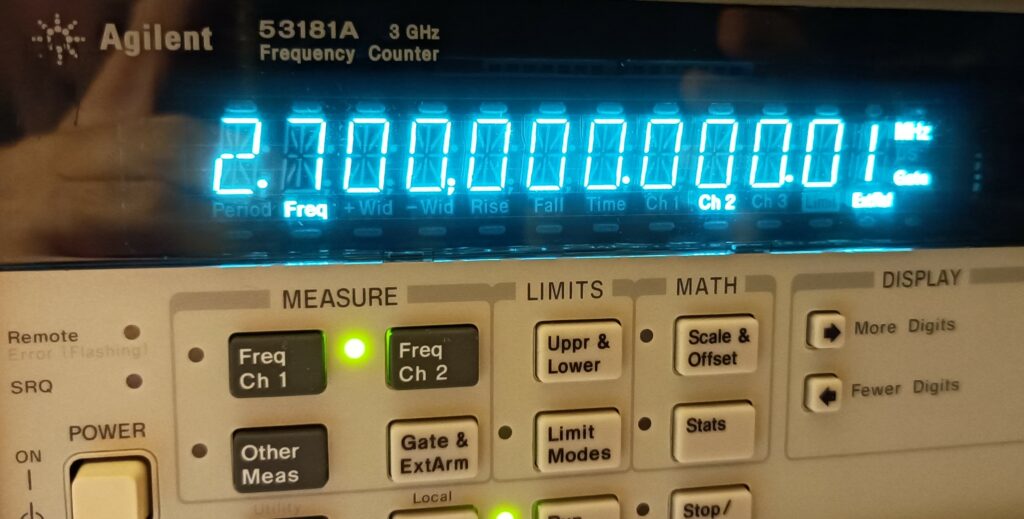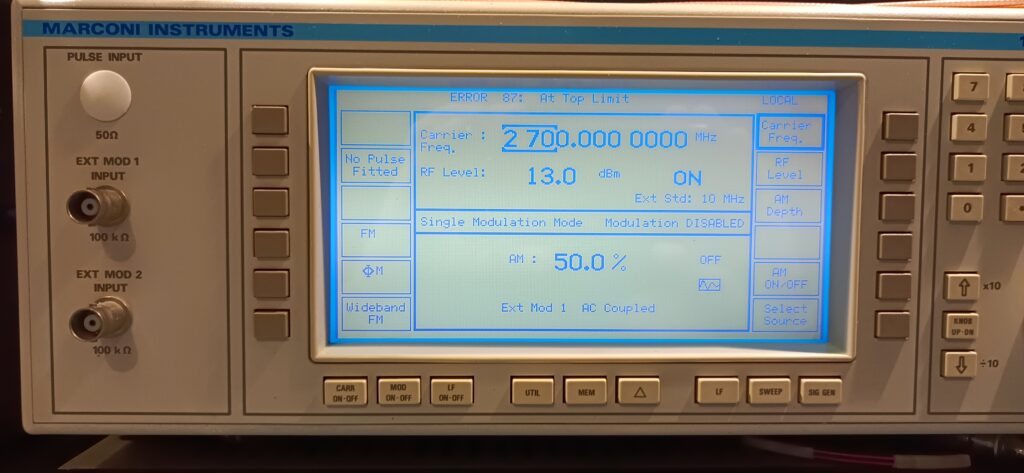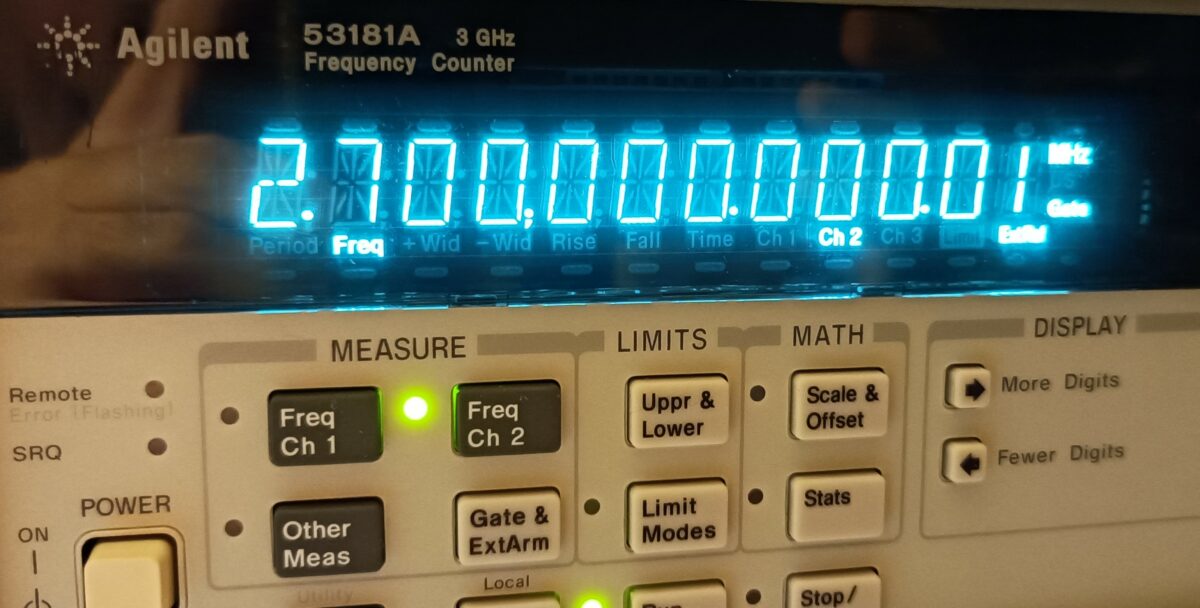Many measuring devices have a maximum frequency up to which they work correctly, as stated by the manufacturer. Above that frequency they don’t just stop working, rather they still have a range above where they still may work correctly, just aren’t as sensitive. Many oscilloscopes, for example, can work up to twice their bandwidth, but the measured amplitudes are not more than some random numbers. You can still see the waveform, but not do any meaningful measurements.

| Manufacturer | Model | Input | Stated freq | Works freq |
| Agilent | 53181A | CH1 | 225 MHz | 400 MHz |
| CH2 | 3 GHz | sure 2.7 GHz | ||
| Philips | PM6654 | A | 120 MHz | 160 MHz |
| C | 1.5 GHz | 1.81 GHz | ||
| Tektronix | TDS380 | CH1 | 400 MHz | 820 MHz |
| CH2 | 400 MHz | 640 MHz | ||
| Hameg | HM1507-3 | CH1 | 150 MHz | 250 MHz |
| CH2 | 150 MHz | 260 MHz | ||
| Hameg | HM8021-2 | A | 1 GHz | 1.09 GHz |
| B | 150 MHz | 180 MHz | ||
| Hameg | HM8021-3 | A | 150 MHz | 240 MHz |
| C | 1 GHz | 1.47 GHz | ||
| Hameg | HM8021-3 | A | 150 MHz | 240 MHz |
| C | 1,6 GHz | sure 2.7 GHz | ||
| Hameg | HM8021-4 | A | 150 MHz | 170 MHz |
| C | 1.6 GHz | sure 2.7 GHz | ||
| Philips | 6611 | A | 80 MHz | 110 MHz |
| Fluke | PM6690 | A | 300 MHz | 380 MHz |
| B | 3oo MHz | 400 MHz | ||
| C | 2,7 GHz | sure 2.7 GHz |


Signal generator used: Marconi Instruments 2031.
Settings: output level +13dBm, frequency step 10MHz.
Last updated on 2023-02-09 at 02:34 UTC

